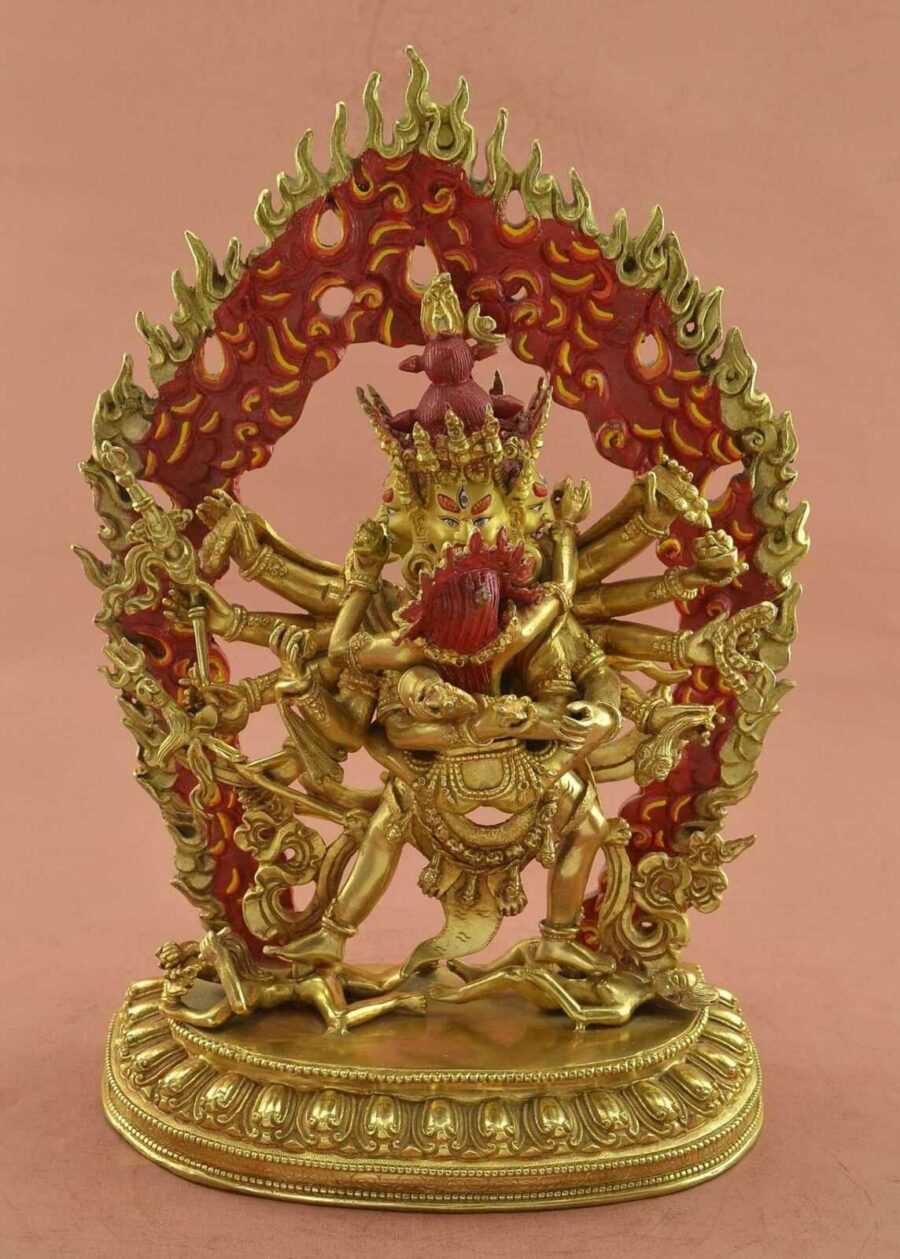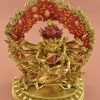This Chakrasamvara statue is depicted with his consort Vajravarahi in yab yum. The eternal union of wisdom and compassion is represented by their embrace. Additionally, Chakrasamvara holds the ghanta bell in his left hand and the vajra in his right. Once again we see the primordial union of wisdom (ghanta) and compassion (vajra) depicted with these venerable symbols.
Our Chakrasamvara statue with consort is also standing in warrior pose. Under his right foot is the goddess Kalarati who is the embodiment of nirvana. Additionally, the male god Bhairawa represents samsara and he is trapped under the left foot of Chakrasamvara. This depiction portrays Chakrasamvara and his consort as beyond nirvana and also samsara.
The tantra of Chakrasamvara dates back to the outset of Tibetan Buddhism in the 8th-9th century. Also, the tantra associated with our yab yum Chakrasamvara statue is of the mother class of Anuttarayoga Tantra in Vajrayana Buddhism. It is also called the “Discourse of Sri Heruka and the Samvara Light”. As a result, Chakrasamvara is also well known as “Heruka”. Through visualizing oneself as the deity, it is possible for devotees to obtain mundane siddhis (accomplishments) such as flight and also supramundane siddhis such as enlightenment.












